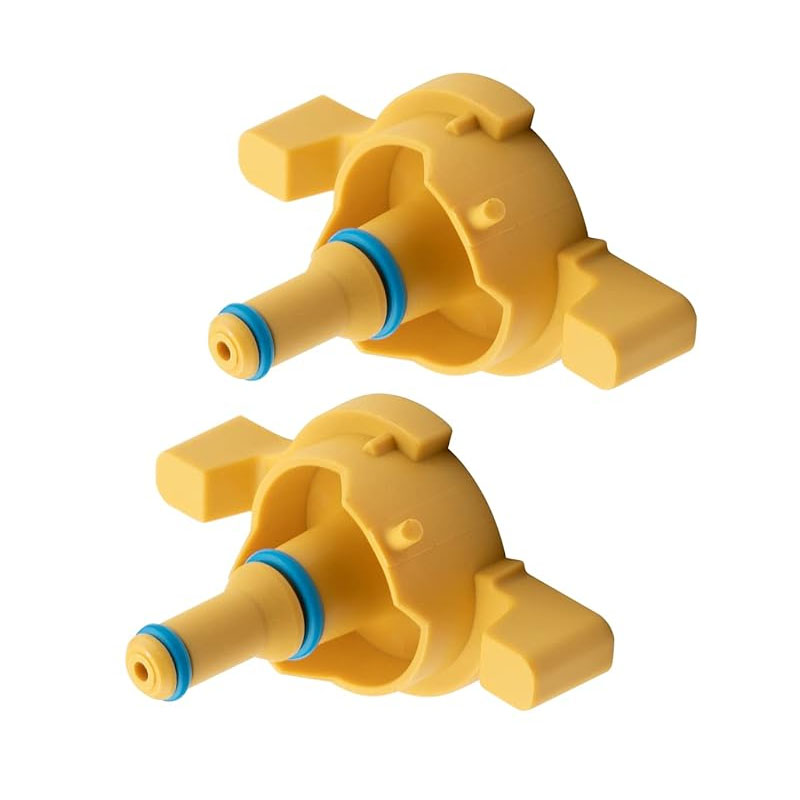Crankshaft Pulley Seal Replacement Guide for Optimal Engine Performance and Maintenance
Understanding the Crankshaft Pulley Seal Importance, Function, and Maintenance
The crankshaft pulley seal is a crucial component in the engine of a vehicle. While it may not be the first thing that comes to mind when one thinks of engine parts, its role in maintaining the integrity and functionality of the powertrain cannot be overstated. In this article, we will delve into what the crankshaft pulley seal is, its functions, common issues associated with it, and tips for maintenance.
What is the Crankshaft Pulley Seal?
The crankshaft pulley seal, often referred to as the crankshaft front seal, is located at the front of the engine, where the crankshaft extends out to connect with the crankshaft pulley. This seal is typically made from durable rubber or elastomeric materials, which can withstand the considerable heat and pressure generated within the engine. Its primary purpose is to prevent oil leaks from the engine, aiding in maintaining oil pressure and ensuring the proper functioning of the engine’s lubrication system.
Functions of the Crankshaft Pulley Seal
1. Preventing Oil Leaks The primary function of the crankshaft pulley seal is to contain engine oil within the crankcase. Any leaks can lead to low oil levels, which can significantly damage the engine over time.
2. Maintaining Oil Pressure This seal helps maintain the correct oil pressure within the engine. Adequate oil pressure is essential for lubricating moving parts and preventing wear and tear on the engine components.
3. Protecting Engine Components By keeping oil contained, the seal prevents contaminants such as dirt and debris from entering the engine, thereby protecting critical components from premature wear.
4. Ensuring Performance A properly functioning crankshaft pulley seal contributes to the overall efficiency of the engine. It aids in ensuring that the engine runs smoothly and performs optimally.
Common Issues with the Crankshaft Pulley Seal
Despite its robust design, the crankshaft pulley seal can wear out or get damaged over time. Here are some common issues associated with this component
1. Wear and Tear Normal wear and tear can lead to the degradation of the seal, causing it to harden or crack. This can result in oil leaks that compromise engine performance.
crankshaft pulley seal

2. Improper Installation If the seal is not installed correctly, it can lead to premature failure. It’s crucial that the seal is aligned properly and seated according to the manufacturer’s specifications.
3. Overheating Excessive temperatures can cause the seal material to deteriorate. Factors such as prolonged engine running, low oil levels, or a failing cooling system can contribute to overheating.
4. Contamination Dirt, debris, or other contaminants can damage the seal over time, leading to breaches that allow oil to escape.
Maintenance and Replacement
Maintaining the crankshaft pulley seal is essential for the longevity of your engine. Here are some maintenance tips
1. Regular Inspections Periodically check for any signs of oil leaks around the crankshaft area. If you notice oil spots under your vehicle, this could indicate a failed seal.
2. Oil Changes Regular oil changes not only keep your engine lubricated but also help in identifying any potential issues early on. Clean oil helps in reducing pressure on the seal.
3. Professional Service If you suspect that the crankshaft pulley seal is failing, it’s best to consult a professional mechanic. They can perform thorough inspections and replace the seal if necessary.
4. Timely Replacement If your mechanic recommends replacing the crankshaft pulley seal, do not delay. Prompt replacement can prevent more significant issues down the line, including engine damage and costly repairs.
Conclusion
The crankshaft pulley seal, though a small component in the grand scheme of an engine's operations, plays an essential role in its functionality and performance. Regular inspections and timely maintenance of this part can prevent leaks, maintain oil pressure, and ultimately ensure the longevity of your vehicle's engine. As with all vehicle components, staying proactive about maintenance is key to a trouble-free driving experience. Remember, a well-maintained engine is a happy engine.
-
Understanding the Front Main Engine Seal: Purpose, Maintenance, and Installation
News Jul.29,2025
-
Understanding O-Rings and Seal Rings: Types, Applications, and Custom Solutions
News Jul.29,2025
-
Understanding Crankshaft Oil Seals: Rear Seals, Pulley Seals, and Their Role in Engine Integrity
News Jul.29,2025
-
The Importance of Front and Rear Crankshaft Seals in Engine Performance and Oil Management
News Jul.29,2025
-
Crank Oil Seals: Functions, Types, and Cost Considerations in Engine Maintenance
News Jul.29,2025
-
A Comprehensive Guide to O-Rings and Seals: Types, Materials, and Global Applications
News Jul.29,2025
-
Mastering Diesel and Performance Engine Maintenance: A Guide to Critical Oil Gaskets
News Jul.28,2025
Products categories















